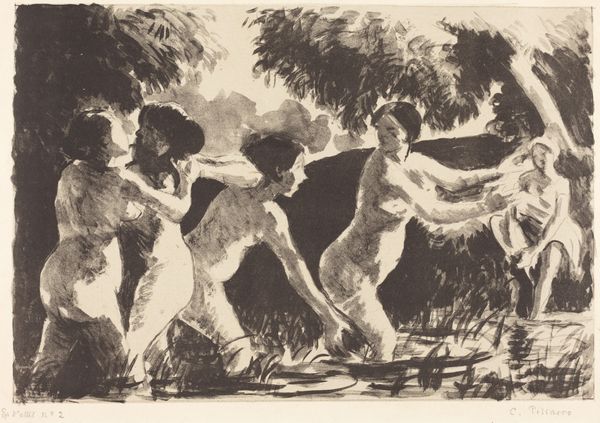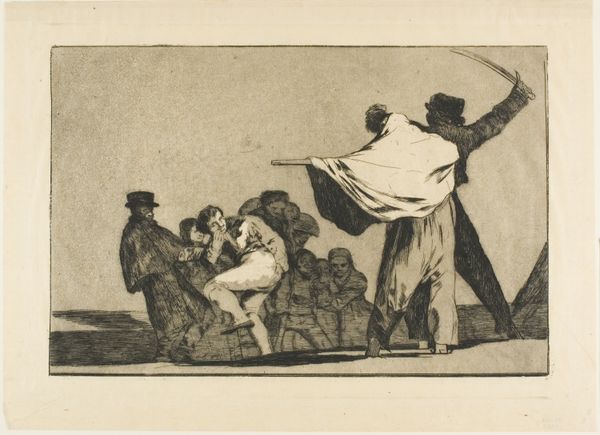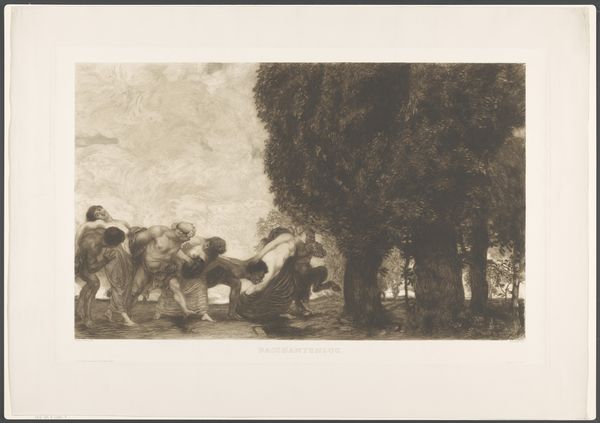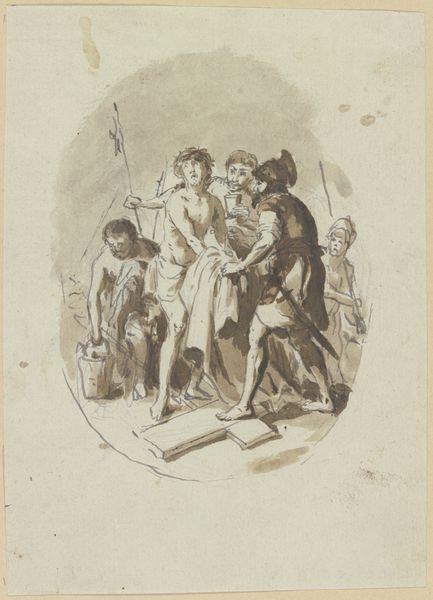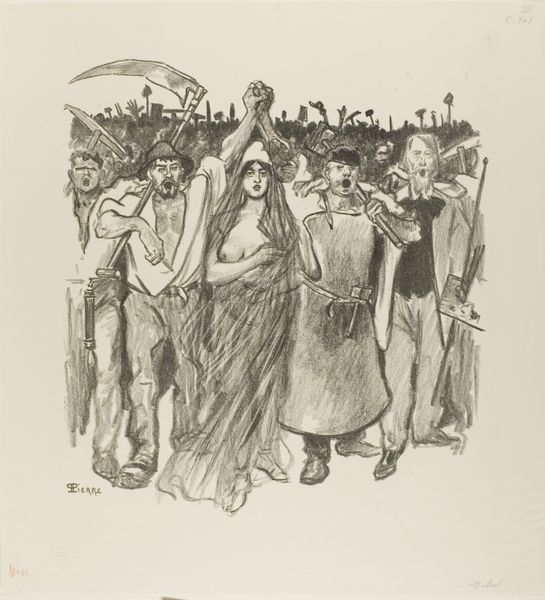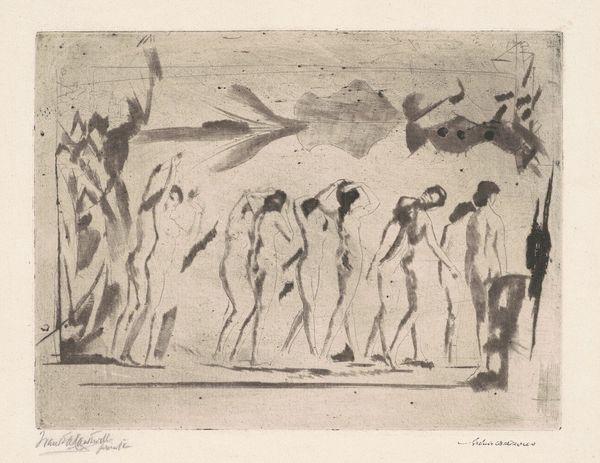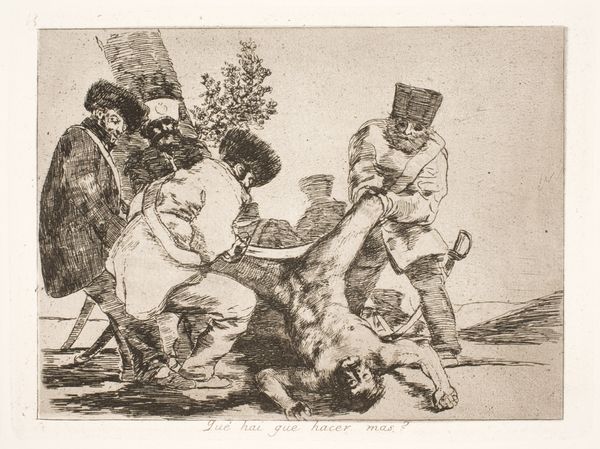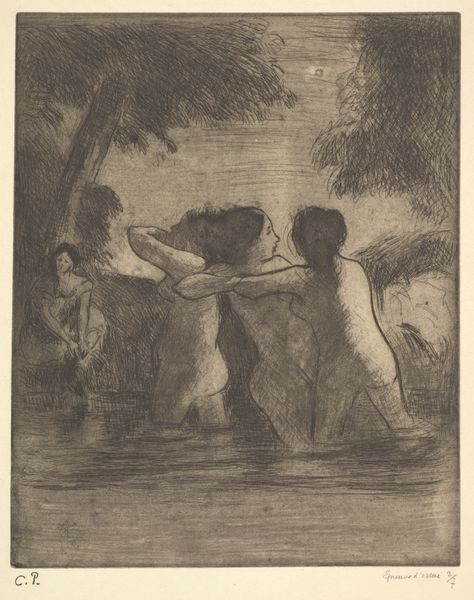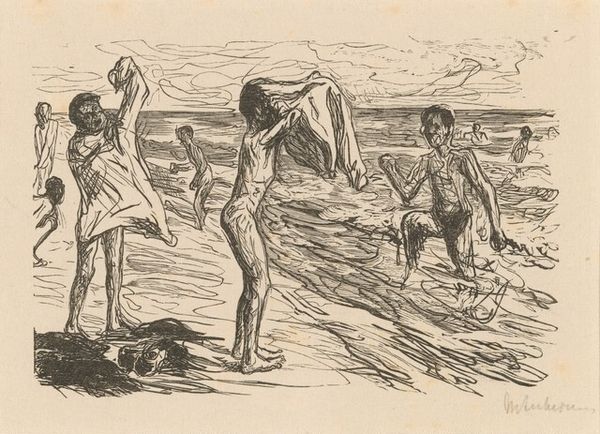
Dimensions: sheet: 10 13/16 x 14 7/8 in. (27.4 x 37.8 cm) plate: 5 1/16 x 7 13/16 in. (12.9 x 19.9 cm)
Copyright: Public Domain
Editor: Here we have Camille Pissarro’s "Group of Bathers," created in 1897. It’s a charcoal and pencil drawing, or rather a print, and the Metropolitan Museum holds it. I find the overall effect quite striking for its emphasis on form achieved with seemingly simple means. What strikes you most about its visual properties? Curator: Immediately, I note the dynamic interplay of light and shadow. Pissarro orchestrates the tonal variations masterfully. Observe how the stark contrast sculpts the figures, defining their contours and imbuing them with volume. The texture achieved through the layering of charcoal and pencil invites consideration of its construction and materiality. Can you identify where he has favoured one over the other? Editor: Well, the pencil seems dominant in outlining the figures, particularly the one on the right, whereas charcoal appears to add depth and shading to the backdrop. It’s an interesting combination of precision and looseness. Are there notable patterns within the configuration of the bodies? Curator: Note the rhythm established by the varied poses. Pissarro subtly interweaves each form. Consider how these arrangements, alongside the tonal palette and texture contribute to the overall formal harmony. Is the focus representational, or is something else happening? Editor: I see your point about the rhythm. It almost feels like he's composing a visual poem of forms, with a focus on their structure. Now I appreciate the print even more as an exercise in exploring fundamental aesthetic relationships! Curator: Precisely. Approaching it from that lens, the drawing becomes something far beyond mere representation. I'm glad to hear you appreciate it, too.
Comments
No comments
Be the first to comment and join the conversation on the ultimate creative platform.
